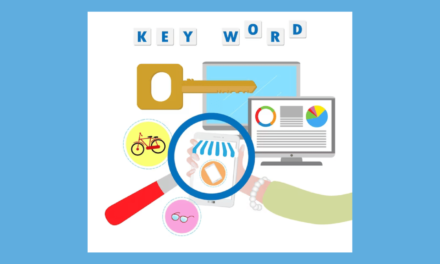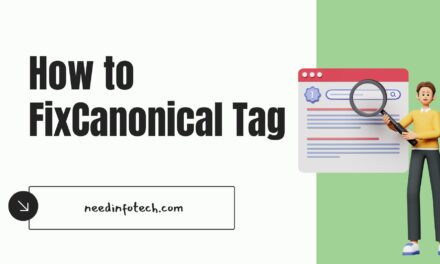Are you unknowingly committing the critical error that leads 99% of new bloggers to abandon their blogs within the first year? If you are, you’re not alone.
The mistake in question? Creating blog posts without a clear understanding of who your blog’s target audience is. Neglecting this crucial aspect can result in significant losses of time and money in the long run.
Fortunately, identifying and defining your target audience doesn’t have to be as challenging as it may seem. The effort invested in this process pays off handsomely. Knowing precisely who your ideal reader is and understanding their needs can save you substantial time and resources. So, if you’re pondering the question, “Who is the target audience of my blog?” you’ve come to the right place.
In this post, we’ll guide you through a straightforward and quick process to find your blog’s target audience step by step. Additionally, we’ll share practical blogging tips to help you craft better, more relevant content with each blog post.
What is a blog target audience, anyway?
Let’s start with the basics. Your blog’s target audience is the group of readers who stand to gain the most from your blog. These individuals find the highest value in your articles and are most likely to resonate with your content. Regardless of your blog’s focus, keeping your target audience in mind is crucial. Here’s why:
Why your target audience is so important:
1. They help you create better content:
– Understanding the specific needs and struggles of your audience allows you to offer solutions tailored to them, resulting in significantly improved content.
2. They keep coming back:
– Identifying your target audience cultivates a loyal readership that consistently returns for your content, fostering a deeper connection.
3. They help you become more successful:
– A defined target audience not only ensures a steady flow of traffic but also encourages audience engagement and content sharing, contributing to your blog’s success.
4. They help you generate ideas for new posts:
– Active interaction with your audience reveals their challenges, providing valuable insights for generating relevant and engaging blog post ideas.
5. They help you create the perfect products:
– For those aiming to monetize their blog, understanding the target audience is vital in creating products that directly address their needs and concerns.
6. They are your potential customers:
– Establishing a relationship with your audience builds trust, increasing the likelihood of successful product launches and sales.
In essence, knowing your target audience offers numerous benefits. But do you really need to figure out who they are? Isn’t choosing a profitable blogging niche sufficient, allowing your audience to find you?
Here’s the catch: a blog niche is merely an area of interest and can encompass multiple demographics with varying needs. Finding your target audience takes this a step further, allowing you to cater specifically to a narrower group of readers with shared interests.
How to find your blog target audience?
Once you’ve selected your blog niche, it’s time to answer the burning question: “Who is the target audience of my blog exactly?”
This might be trickier than expected, and your target audience may surprise you. Here’s where to start looking for potential readers:
1. Google Analytics:
Depending on real marketing data to pinpoint the target audience and gain deeper insights into their behaviours is a smart move and Google Analytics can be your helping hand here. This free tool from Google helps to track the origins of your website visitors, analyze their browsing patterns, identify their geographical locations and much more. It also enables you to gather demographic information, providing valuable details about your audience’s age, gender and interests.

2. Facebook groups:
To discover your target audience on Facebook, consider joining niche-specific groups related to your blog’s focus. Numerous highly specialized groups exist on the platform, providing insights into the audience you aim to attract. By observing the posts shared within these groups, you can get information such as- frequently raised questions, common challenges they encounter, trending topics within the niche and demographic details of the audience.

Additionally, Facebook allows you to follow pages within your niche, offering the opportunity to connect with influencers creating content in your space. This not only expands your network but also opens doors to potential collaboration opportunities that align with your overall blog strategy.
3. Quora:
To craft content that resonates with your audience, the discussion threads of Quora serve as an ideal starting point. Responding directly to these questions not only allows us to engage with my target audience but also provides a foundation for creating more comprehensive articles on the same topics over on my blog.
4. Pinterest keywords:
Pinterest operates differently from Facebook, yet insights about your target audience can still be understood if you know where to focus. To know more about your target audience’s interests, conducting a keyword search is beneficial. Initiate a Pinterest keyword search by entering a word closely associated with your niche. Now, observe the clickable suggestion words atop the page, aiding in refining your search results.

Pinterest displays these keywords because they represent common searches related to your term. This insight is valuable for comprehending the specific topics your target audience is intrigued by within your niche. Clicking on any listed words or phrases in these keyword bubbles allows you to further narrow down your search results. A noteworthy detail is the number of followers the original pinner has. If they consistently share content in your niche and boast a substantial follower count, their followers might align with the audience you’re aiming to attract to your blog.
5. Review sites and apps:
Explore review sites and apps to understand your target audience. You’ll see profiles of real individuals who’ve shared their experiences. Analyzing this data reveals some noticeable demographic trends about your audience.

6. Other blogs:
Analyze competitors’ blogs to identify popular posts and gain insights into what resonates with your potential audience. Look into the comments section and you’ll get some ideas on your target audience and their interests.
7. Discussion forums:

In the age of social media, it’s often overlooked that dedicated online discussion forums continue to exist across the Internet, catering to virtually every niche. While Facebook attracts many for online discussions, forums provide a specialized space for individuals with shared interests to gather and engage in meaningful conversations. Just perform a Google search using the query “your niche forum” to explore the available options. When checking a discussion site, pay attention to the freshness and ongoing activity of the forum content. Active and regularly updated forums are indicative of an engaged community and you can understand what your target audience might be looking for and their pain points.
How to create your target audience persona?
Once armed with insights into your potential readers’ interests and needs, it’s time to create your “buyer persona.” Think of this as a representation of your ideal reader. Consider details such as age, gender, location, occupation, interests and online behaviour. By defining your target audience in detail, you’ll be better equipped to create content that aligns seamlessly with their expectations.
How to use your buyer persona while blogging?
Now that you’ve identified your persona, it’s time to put them into action. Incorporate your buyer persona into every stage of your content creation process, from planning your editorial calendar to promoting articles on social media.
Your target audience is probably reading your blog, but they might not be extracting the full value from your content. By getting personal, narrowing down your target audience, and creating more relevant content, you can attract the right kind of visitors, foster loyalty, and solidify your presence in your blog niche. Once you’ve found your target audience, embark on planning your blog posts and content strategy with a newfound understanding of who you’re writing for.





